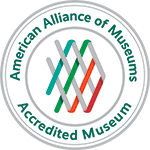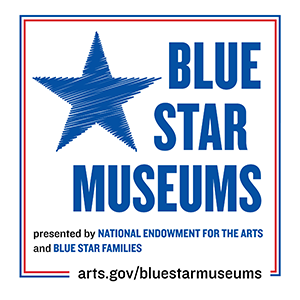Nick Engelbert, Grandview, Hollandale, WI
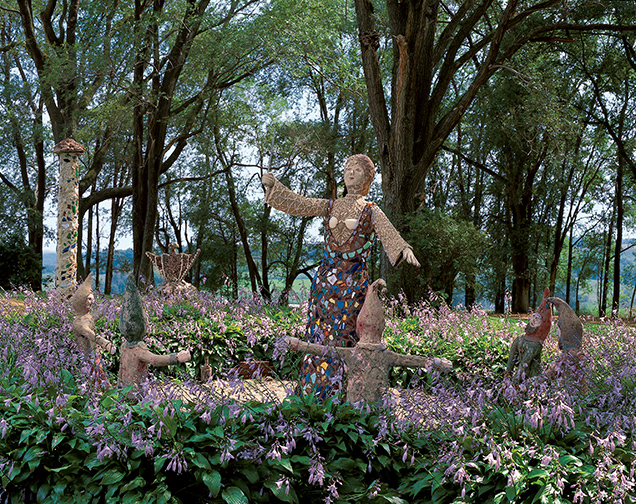
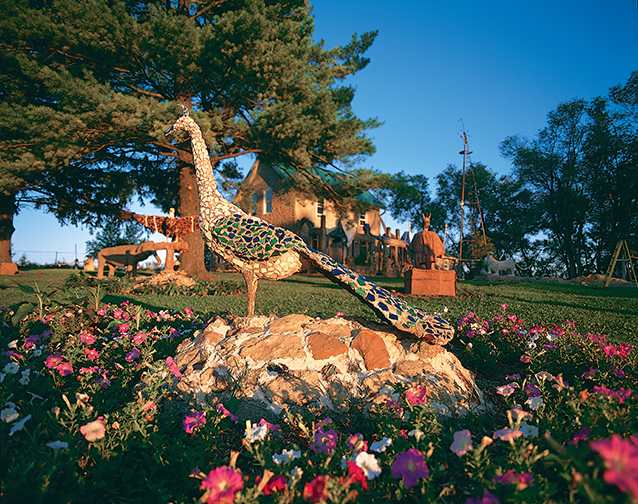
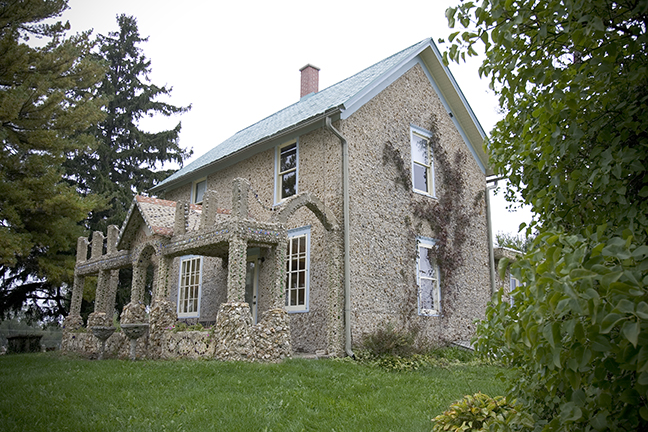
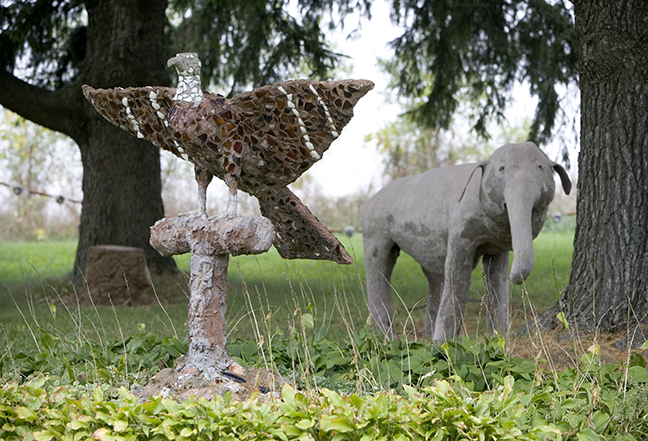
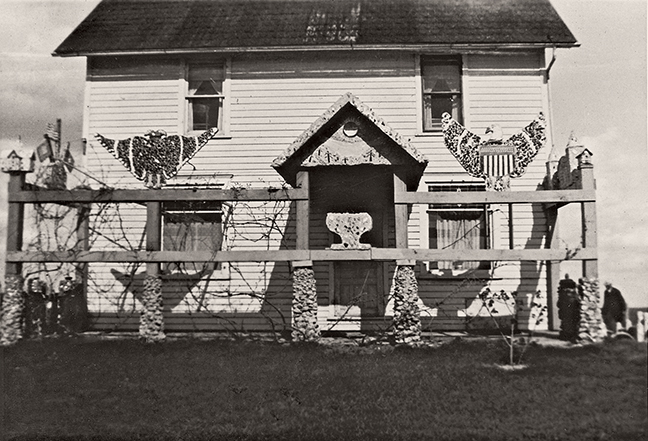
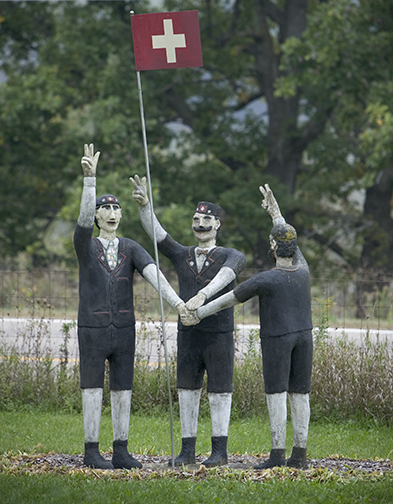
The Site
After purchasing Grandview, his farm in Hollandale, Wisconsin, Engelbert initially used a concrete and soil mixture to build an arched colonnade—inlaid with stones, shells, and bright bits of glass—onto the front of his house. Pleased with the results, he similarly embellished the entire exterior of the house and enlivened the hillside with over forty concrete figural sculptures that celebrate farm life, local immigrant cultures, and family. His technique was to wrap wooden boxes with metal nets, cover the mass with concrete, and then shape it into his desired form before embedding the adornments. Engelbert honored his adopted country and the simple joys that came with owning a farm—playing music, making wine, and spending time in the idyllic surroundings with his family.
As the artist grew older, sculpting with concrete became increasingly difficult. He turned to painting to record memories of youthful travels, young fatherhood, and the construction of his art environment.
Today Grandview is open to the public, stewarded by the Pecatonica Educational Charitable Foundation, Inc. The site is part of Wandering Wisconsin, a consortium of nine artist-built environments.
Nick Engelbert
1881–1962
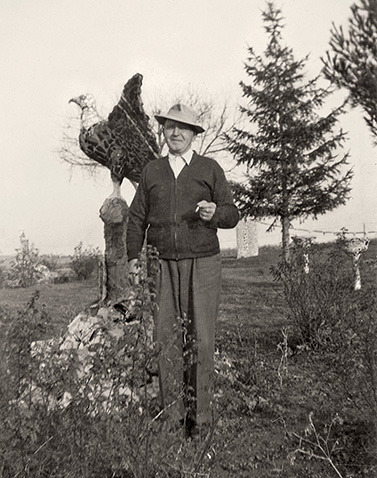
Nick Engelbert (Engelbert Koletnik) was born in 1881 in Prevalje, Austria (now Slovenia), one of four children. When he was three, his father died, and shortly thereafter his mother moved the family to Vienna. After a vocational apprenticeship and compulsory military service, he traveled the world. At the age of twenty-eight, he sailed to Baltimore, Maryland, then toured the American landscape for a few years, picking up odd jobs. He met his Swiss-born wife, Katherine, around 1913, and the couple settled in Hollandale, Wisconsin, where they took up farming and dairying and raised four children.
Engelbert purchased a picturesque hillside farm in 1922, which he called Grandview. About 1930, inspired by the Dickeyville Grotto in a nearby county, Engelbert began to transform his property into his own roadside attraction.
Engelbert died in 1962. Today, the John Michael Kohler Arts Center cares for several fragile sculptures from the site as well as seventy-six of his paintings. In 1991 and 1997, Kohler Foundation, Inc., acquired and undertook preserving Grandview. It was gifted to the Pecatonica Educational Charitable Foundation, Inc., in 1997. The site is part of Wandering Wisconsin, a consortium of nine artist-built environments.
Arts Center Exhibitions
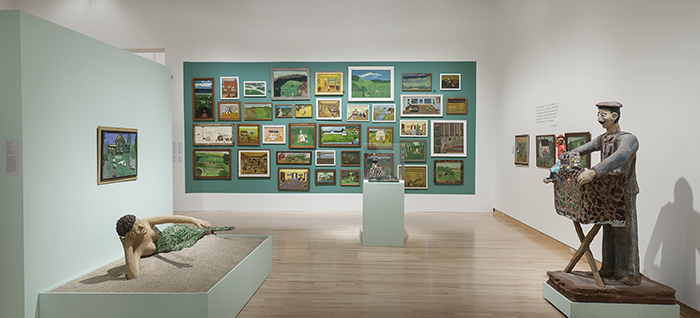
Driftless: Nick Engelbert & Ernest Hüpeden +David Rhodes
January 15–April 16, 2017


